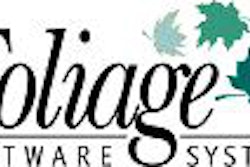VANCOUVER - Spending more on a PACS project does not necessarily mean the consumer will end up getting more for their money, according to PACS expert Paul Nagy, Ph.D.
"No matter what you buy today, it will be outdated three years from now," said Nagy, a physicist and assistant professor of radiology at the Medical College of Wisconsin in Milwaukee.
But by taking advantage of commercial off-the-shelf hardware, and scaling a project appropriately, PACS does not have to be a budget buster, he assured his audience Friday at the 2004 Society for Computer Applications in Radiology (SCAR) meeting.
Nagy offered his thoughts on getting the most bang for the buck in PACS acquisitions.
With the continuing rapid advancement of computer technology in both hardware and software, Nagy cautioned against thinking of a PACS as a one-time purchase.
"No PACS lasts forever," he said. "When you buy your PACS you need to have an exit strategy in mind as to how you're going to migrate to next PACS."
Nagy advocated buying as much commercial off-the-shelf hardware as possible to keep costs low. He recommended that buyers obtain a list of proposed hardware from a potential PACS vendor and then research the cost of the products on the open market.
"A reasonable markup by a vendor for hardware is about 10% to 15% over cost. This should cover the assembly and integration services they're providing. Otherwise, you may want to investigate the cost of performing the integration yourself," he said.
As a rule of thumb, Nagy recommends spending about 30% of the PACS budget on hardware. The remaining 70% should be dedicated to software and support.
Flat-panel displays
One area that has seen tremendous price breaks for the consumer in the past couple of years has been in the form of 19" and 21" commercial color LCD monitors. According to Nagy, these monitors have become an optimal solution to consider for medical imaging applications that don't require very high resolution.
"The resolution of most of these monitors supports 2 megapixels, which is more than adequate for diagnostic quality review of all modalities outside of CR and DR applications," he said. "These monitors handily exceed the brightness requirements of the American College of Radiology for diagnostic monitors of 47 foot-lamberts."
At commercial pricing, it is feasible to user color LCD monitors outside the radiology department such as orthopedics, neurology, and the emergency room. All monitors can and should be calibrated to the DICOM Grayscale Display Function using calibration equipment, Nagy said.
Commercial storage
Another hardware area that has seen steep price declines is digital storage. A terabyte of storage has dropped from nearly $4 million to about $6,000-$8,000 in a little over a decade. Nagy advocates PACS storage on a commercial IDE or serial ATA RAID Level 5 hard-drive system.
"Going with commercial drives allowed our institution to easily keep everything online, and absorb the additional costs of storage in the operational budget," he said.
If a PACS consumer is seeking to adopt a storage solution outside the mainstream, he should ensure that the PACS vendor is comfortable with the solution and that the company can provide adequate service and support.
Nagy also recommended that a facility buy only the storage it needs in six-month increments, as the price of storage continues to decline by half just about every 18 months.
IHE adoption
The Integrating the Healthcare Enterprise (IHE) initiative is not a standard, but rather a guideline for the best use of currently existing DICOM and HL7 standards. According to Nagy, adherence to open standards is a consumer's best assurance of long-term cost savings and protection from obsolescence.
He strongly advocated that a PACS buyer closely exam their vendors IHE integration statements, as compliance with the initiative varies widely in the marketplace.
"IHE is for the relief of pain that PACS can cause," he said.
Line item pricing, support, and licensing
PACS buyers should insist that each component of a PACS be delineated in a request for proposal. This will allow the independent verification of hardware pricing. It also separates the software, hardware, and service charges, allowing buyers to determine if their needs are being met.
For support purposes, Nagy said that hardware support should be contracted with the hardware manufacturer. In addition to being less expensive than PACS vendor support, manufacturers may be more responsive. However, the vendor should provide remote technical support for PACS software, he said.
Finally, Nagy advocated purchasing concurrent licensing for an institutional PACS system. Concurrent licensing permits a certain number of workstations to use software at any given time. Because not every workstation that has PACS access will be utilizing the PACS simultaneously, this makes more sense than paying a fixed license fee for each and every workstation, he said.
By Jonathan S. BatchelorAuntMinnie.com staff writer
May 22, 2004
Related Reading
Part I: Exploring PACS secrets, May 14, 2004
Study uncovers unexpected costs of PACS adoption, May 4, 2004
MiniPACS networks bring advantages, integration challenges, April 29, 2004
PACS success relies on QA/QC procedures, March 12, 2004
Italian hospital finds that PACS doubles costs, March 5, 2004
Copyright © 2004 AuntMinnie.com

















